Rashid Johnson in Menorca: a journey through migration, longing and togetherness
We visited Rashid Johnson’s Brooklyn studio ahead of the artist’s show at Hauser & Wirth Menorca, which contemplates drift – physical and emotional (until 13 November 2022)
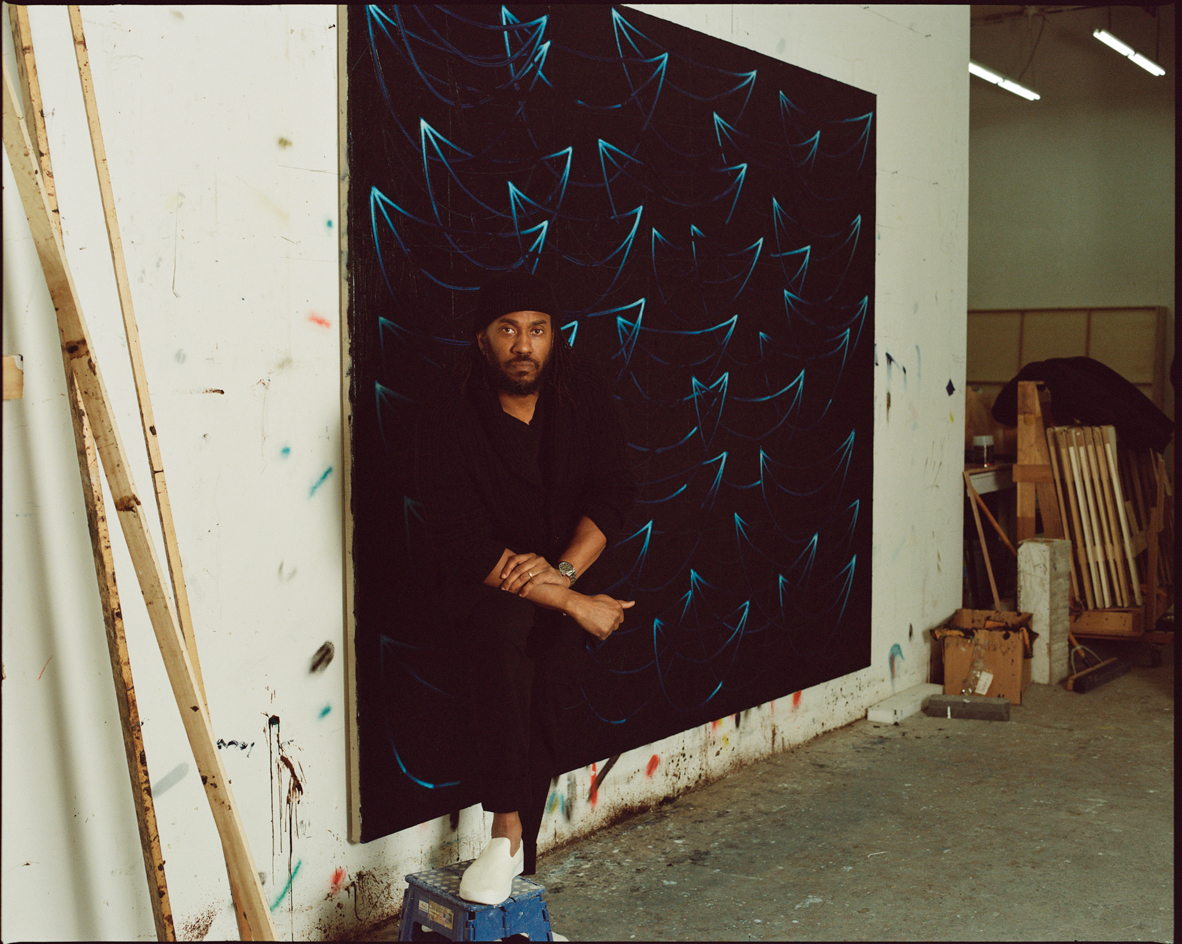
Davey Adésida - Photography
Boats have been populating Rashid Johnson’s view lately, particularly in the last two years, after the artist started spending more time on the Hamptons side of Long Island. Since then, boats have unearthed connotations beyond vehicles or charming visual accents on the shore. The epiphany coincided with a heightened sense of solidarity with the Black Lives Matter movement and with those struggling through the pandemic – unity, agency and co-existence, Johnson noticed, are notions contained both within his professional and personal circles and the likeness and purpose of a boat.
During those long, idyllic days spent looking at the horizon, he heard numerous expressions of togetherness and, all being somewhat true, he also pondered the meaning of being in the same boat. What was the direction? Or who were his fellow travellers? Johnson’s answers – or at least his searches for them – are a series of paintings and sculptures with boat motifs in his new show at Hauser & Wirth’s art centre in Menorca. Proving that motivation works in mysterious ways, the Brooklyn-based artist made the show’s large-scale grid paintings, and four firepit sculptures encrusted with VHS tapes, a CB radio, book and oyster shells, while unaware of their intended venue. ‘When the opportunity to show them surrounded by water arose, it was clear that the works belonged to Menorca,’ he says.
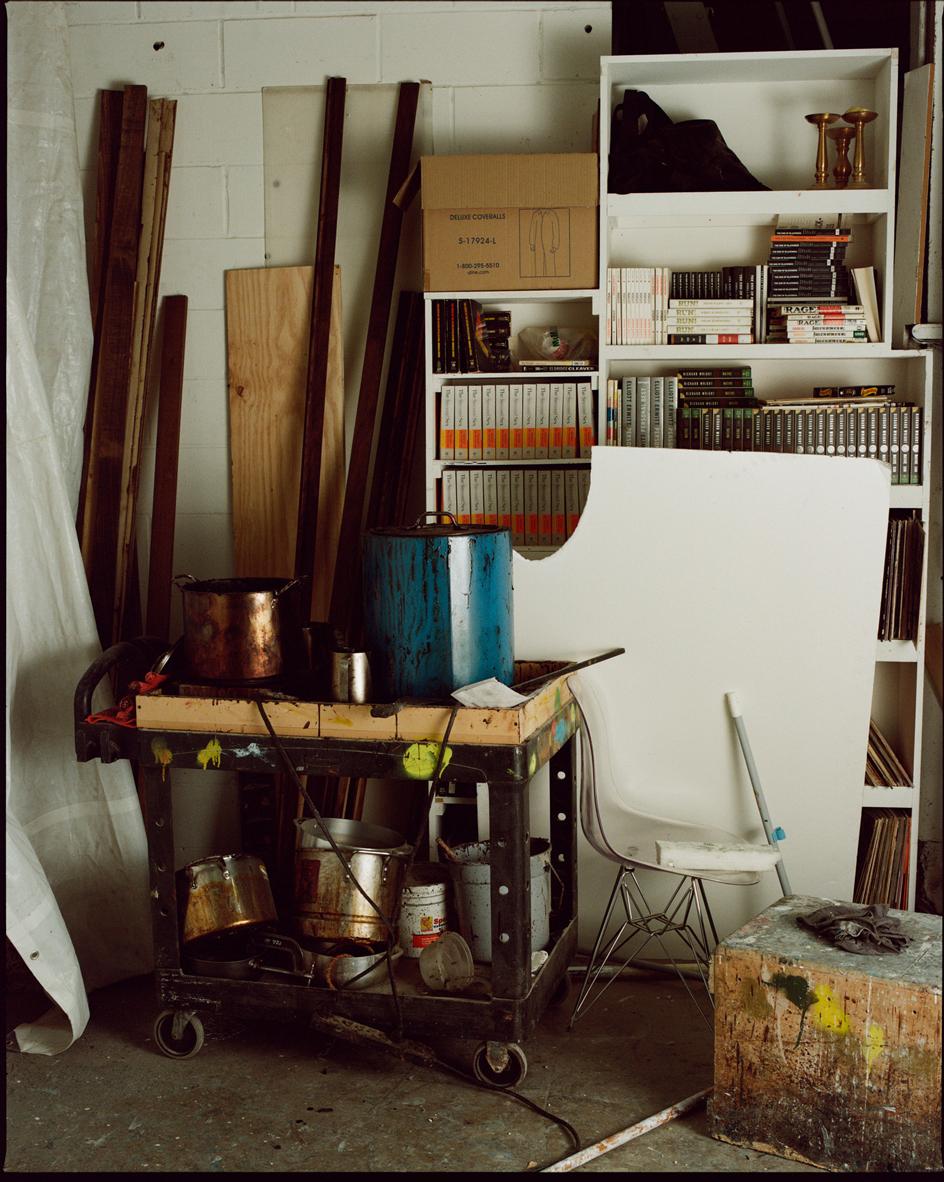
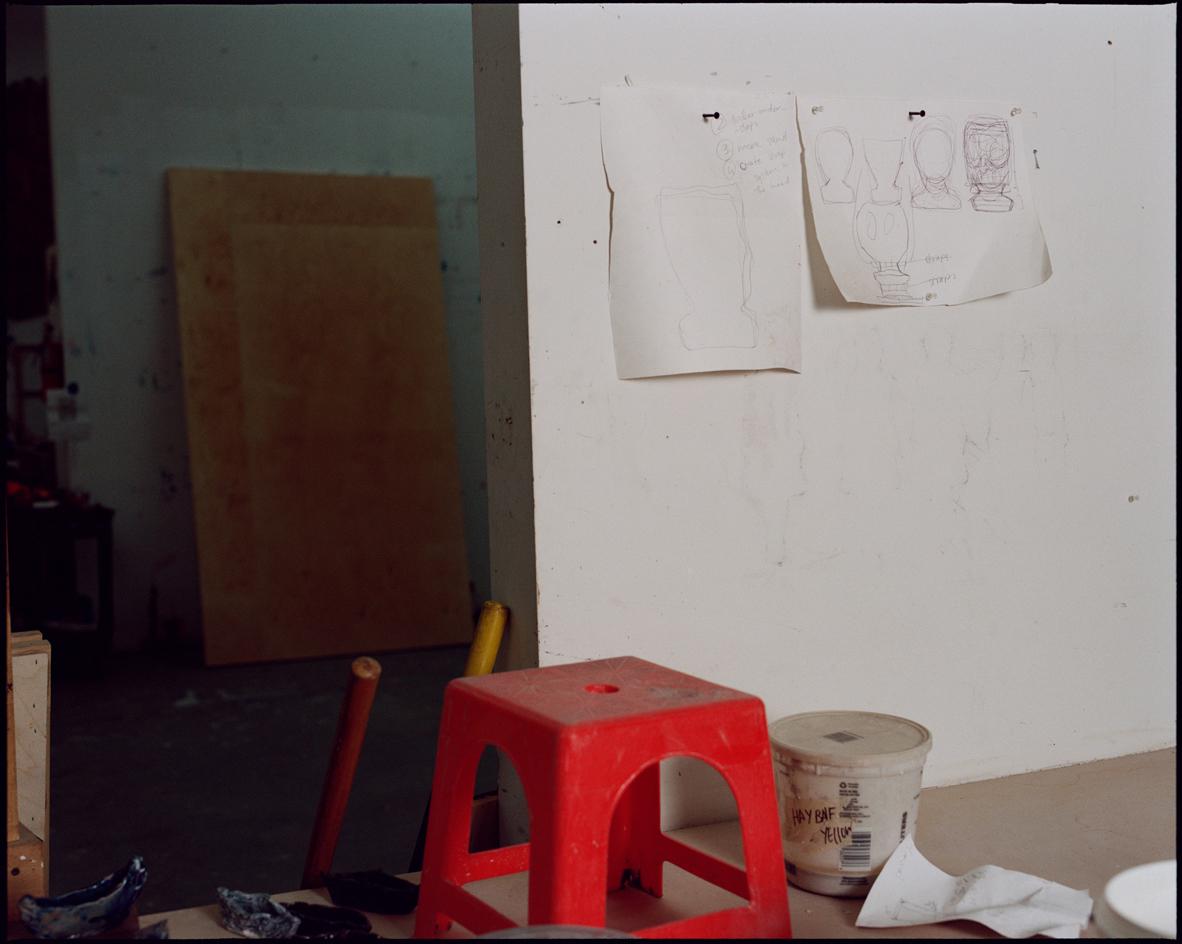
Inside Rashid Johnson’s East Williamsburg studio
Johnson’s East Williamsburg studio – which could well moonlight as a warehouse or a mini-factory – is occupied by a combination of works-in-progress and those waiting to dry. Standing amid canvases laid atop one another or leaned side by side, Johnson is dressed leisurely, in all black, on a breezy, slow-paced February afternoon, the kind of afternoon that deserves a chunky cookie, which he offers up.
Partly inherent to his aura, Johnson’s calmness also stems from his having bid farewell to the show’s artworks. They are already on a journey across the Atlantic Ocean, perhaps facing the ebbing sea towards the Strait of Gibraltar, through which they will cut for the tiny Spanish island. One can imagine Johnson’s impressions of boats, either nocturnal-hued repetitions over linen or firm formations in bronze, swaying back and forth against the diligent waves. Movement, however, is not always desirable. The history of the Atlantic is awash with forced migration, and Johnson’s show borrows its title, ‘Sodade’, from another piece of art that perfectly captures this reality. The namesake Cape Verdean song, famously uttered in Cesária Évora’s velvety voice, is an ode to the longing and fear of loss promised by the sea. The heart-aching lyrics pay tribute to Cape Verdeans, past and present, who have left the island in search of other opportunities: ‘Quem mostrava esse caminho longe? Quem mostrava esse caminho longe? Esse caminho pa São Tomé (Who showed you this distant way? Who showed you this distant way? This way to São Tomé)’. Written by Armando Zeferino Soares in the 1950s, these lines, in the Cape Verdean Creole version of Portuguese, express sodade, meaning longing.
Johnson’s encounter with the song is intertwined with a sense of melancholy and longing that has lingered over his last few years. When the artist shared his sentiments with a friend, they told him about a Portuguese word that somewhat sums up his state: saudade. One of those words that capture a very specific feeling that lacks a translation in another language, saudade expresses yearning for something so close yet undeniably distant. Johnson’s research into the expression reminded him of Évora’s song and the Cape Verdean Creole version of the word. ‘The Creole telling is about cultural formation through colonialism, but also how language gets deformed and reshaped in the hands of folks dominated by an outside presence,’ he adds. Johnson intentionally used the Creole spelling in his show’s title, to honour the struggle against oppression and resilience in the face of loss, in particular, loss tied to the sea.
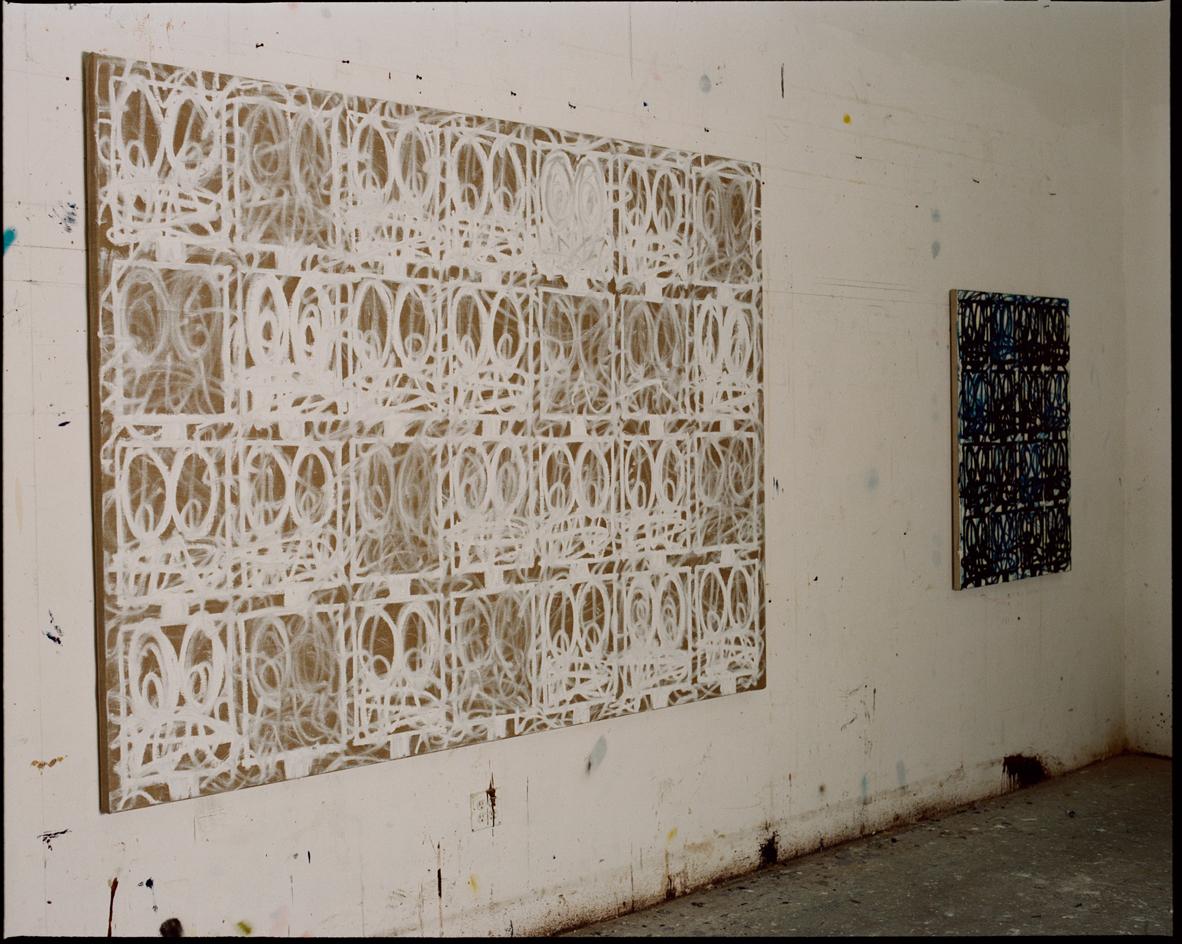
Over the past two decades, Johnson’s practice, spanning painting, sculpture, installation and film, has explored notions of authorship, potential, empowerment and even entitlement. All correspond to a sense of agency. His paintings – thick, nearly sculptural and blanketed by grids of faces, or dressed in shards of mirror and mosaic – compel us to think, understand and express. Johnson believes that painting has the function of a soapbox or pedestal, a platform for the exchange of ideas. ‘The visual layer is an entry point for them to penetrate into work and be prompted, or even confused, by what’s beyond.’
More literally, the show’s boat sculptures are also functioning firepits, an invitation to convene, warm up and converse. ‘The vehicle has been so present in my work – language can be a vehicle for ideas, as can paint, aesthetics or mark-making,’ he says. In that sense, he likens a boat to a stage, the kind he built in Astor Place in downtown Manhattan last June, with non-profit arts organisation Creative Time. For a month, his Red Stage was activated by poets, dancers, musicians, thinkers, and anyone who had anything to say. He calls them pyres. ‘An open stage or a burning boat allows the audience to reflect on the ideas of autonomy and collectivity, especially when we are doing so much coalition-building around Black Lives Matter, the environment, and LGBTQIA movements.’
Wallpaper* Newsletter
Receive our daily digest of inspiration, escapism and design stories from around the world direct to your inbox.
‘That moment was satisfying, an opportunity to think about the world as opposed to being trapped in my own existential conundrum’
Johnson’s oeuvre, while unifying, does not compromise on subjective and singular experiences. Reflection, both internal and physical, is the key in his mixed-media mosaic and mirror paintings, which have the energy of abstract expressionism and the social heft of murals. Radiant, meticulous and poetic, the coalescence of shards ‘invites the viewers to piece the bits together and build their collective experience’. This subtle invitation to communion is a core element of the Anxious Men and Bruise Paintings series, characterised by determined hand gestures and infinite repetitions. Whether a face or an abstract circle, the army of motifs over linen multiply to hallucinatory masses, challenging the viewer to separate each figure from the next. The effort, however, is futile – better to surrender to Johnson’s orchestration of a painterly cosmos and plunge into the synthesis of brushstrokes in black and blue.
Johnson’s colour palette stems from a dynamic between his cultural observations and the alchemy of oil paint. Blue is the fruit of his contemplation on the history of blues music, as well as many artists’ periods dedicated to the hue. ‘Oftentimes, I allow the colour to think about itself,’ he adds. Yellow, which he commonly renders in an alarming hue, is tied to his occasional use of shea butter in some of the sculptures. ‘There is a snowflakeness to mark-making because a gesture can never be repeated,’ he says. ‘But there is satisfaction in just trying to repeat yourself as a mantra.’ The democracy Johnson finds in the grid form – whether with faces, boats or circles – allows him to honour each gesture equally, ‘and aspires to give every section the same opportunity for amplification’, not unlike a voice to be heard or an arm raised.
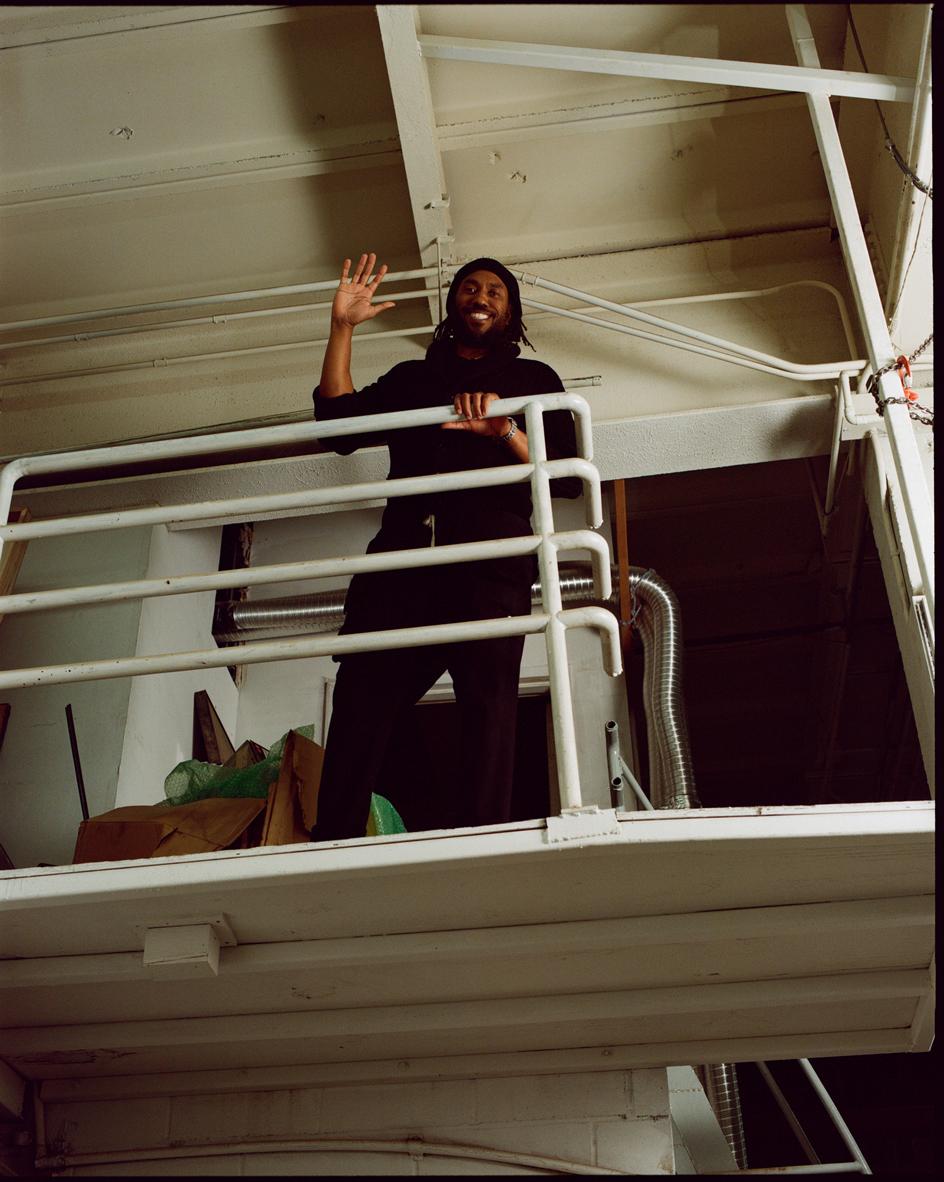
Rashid Johnson photographed in his Brooklyn studio, which is housed in a former industrial building
Johnson builds his grids as a meditative act, rather than basing them on any numeric order. The facial impression in the Anxious Men series was initially intended as a self-portrait, but the feedback he received proved that the sentiment spoke to many. ‘That moment was satisfying, to recognise that this was an opportunity to think about the world as opposed to being trapped in my own existential conundrum.’ A mosaic interpretation of the series is now a mural at the Delta terminal at New York’s LaGuardia airport. Connecting with people in places where they don’t necessarily expect to experience art, he believes, is a promising endeavour: ‘You can traffic through it; you can engage or totally ignore, but regardless, art should have agency in these spaces.’
The artist’s admiration for the architectural marvels of his hometown of Chicago, and his frustration with its segregated urbanisation, contribute to his understating of the impact and the role of an object within an environment. His philosophy of occupying a space is twofold: ‘I’ve been quite careful about not perverting the work when it travels, because my voice must travel along with the themes, concepts and ideas.’ Johnson visited Menorca and Barcelona six years ago, and found himself inspired by the mosaics of Gaudí and Miró. ‘That trip encouraged me to experiment with the medium,’ he remembers. While his mosaic paintings are not included in the ‘Sodade’ show, a similar reflection on formation and singularity constitutes the show’s Seascape, Surrender and Bruise Paintings series. The idea of people gathering around his boat sculptures is exciting. ‘So rarely do artworks have jobs,’ Johnson says. ‘But in the case of a firepit, there is the potential of heat, energy, and a place of activation.’
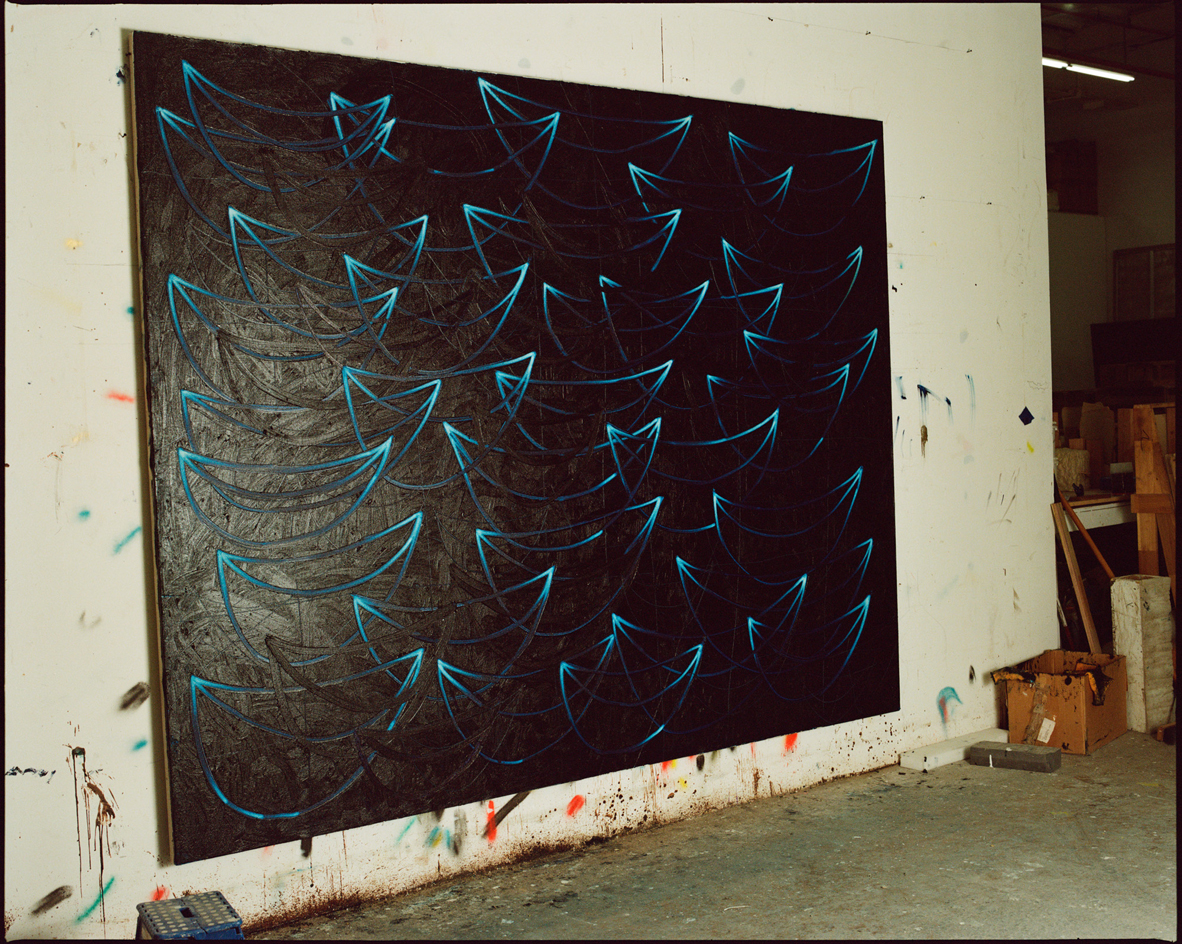
Seascape Painting, ‘Angola’, 2022, oil on linen, inside Rashid Johnson’s Brooklyn studio

Above, Wallpaper’s July 2022 limited-edition cover is Rashid Johnson’s Surrender Painting ‘Absolutely Free’, 2022 courtesy of the artist and Hauser & Wirth. Limited-edition covers are available to subscribers
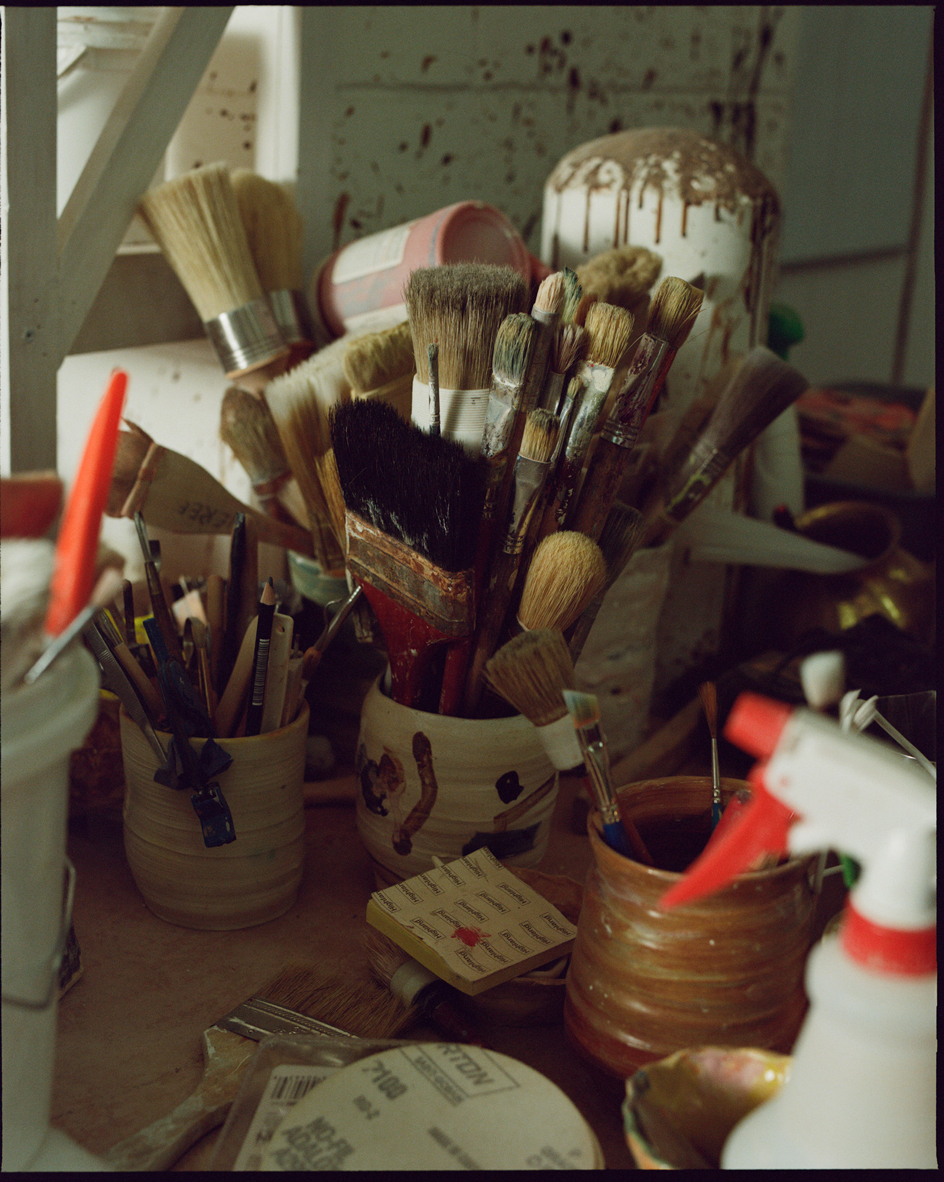
Paint brushes in the artist’s studio
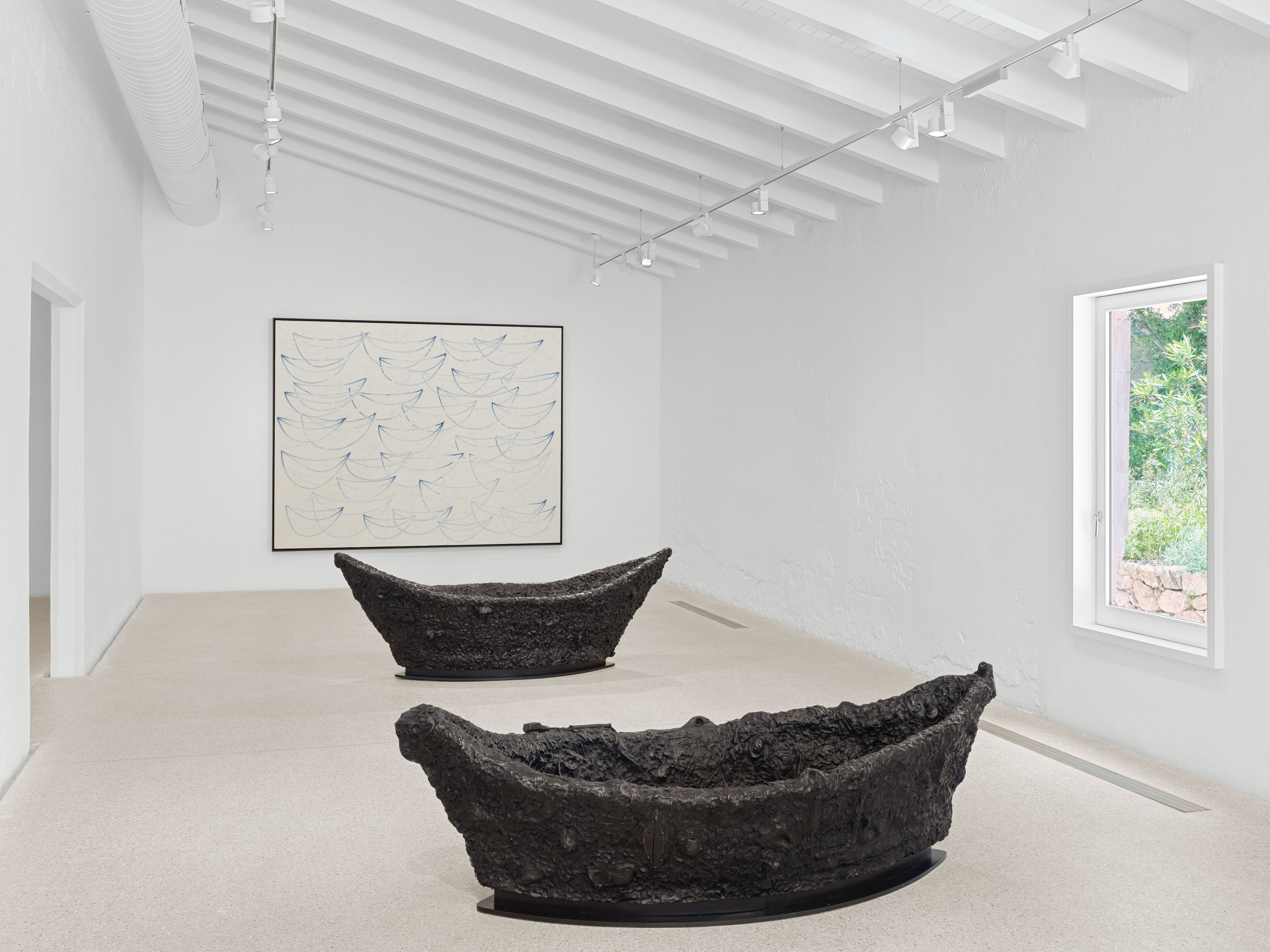
Installation view, ‘Rashid Johnson. Sodade’ at Hauser & Wirth Menorca, from 19 June to 13 November 2022
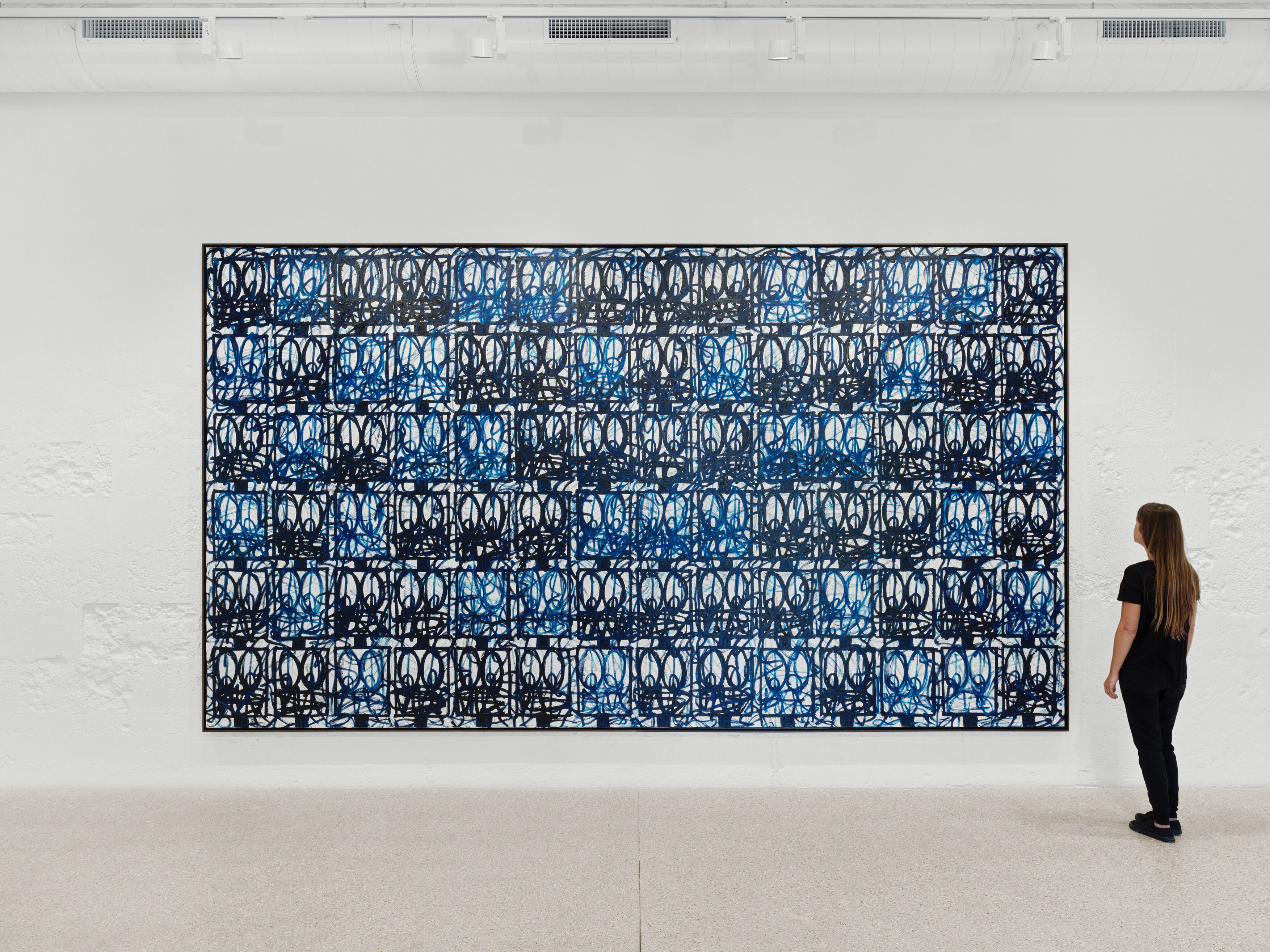
Installation view, ‘Rashid Johnson. Sodade’ at Hauser & Wirth Menorca, from 19 June to 13 November 2022
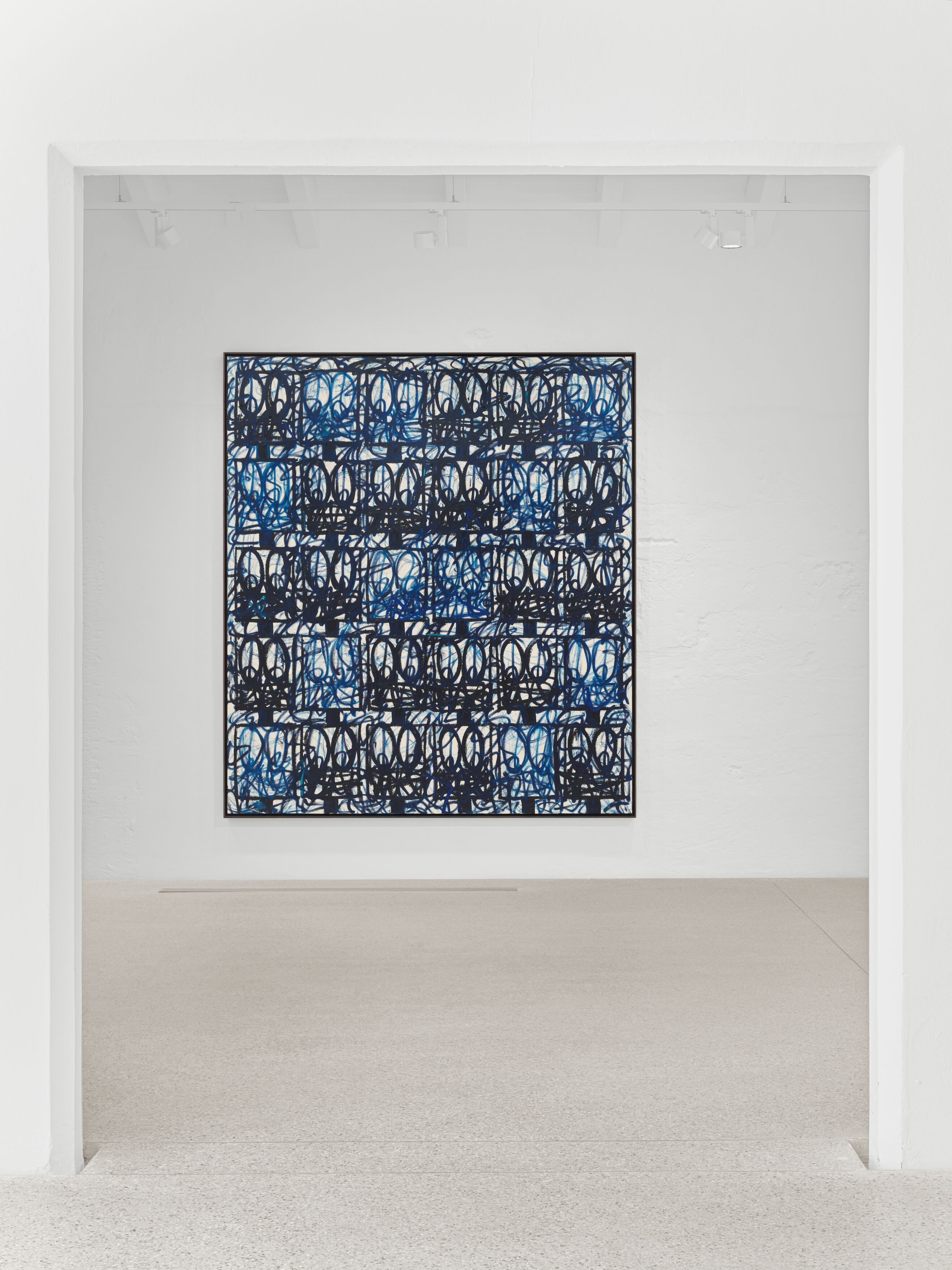
Installation view, ‘Rashid Johnson. Sodade’ at Hauser & Wirth Menorca, from 19 June to 13 November 2022
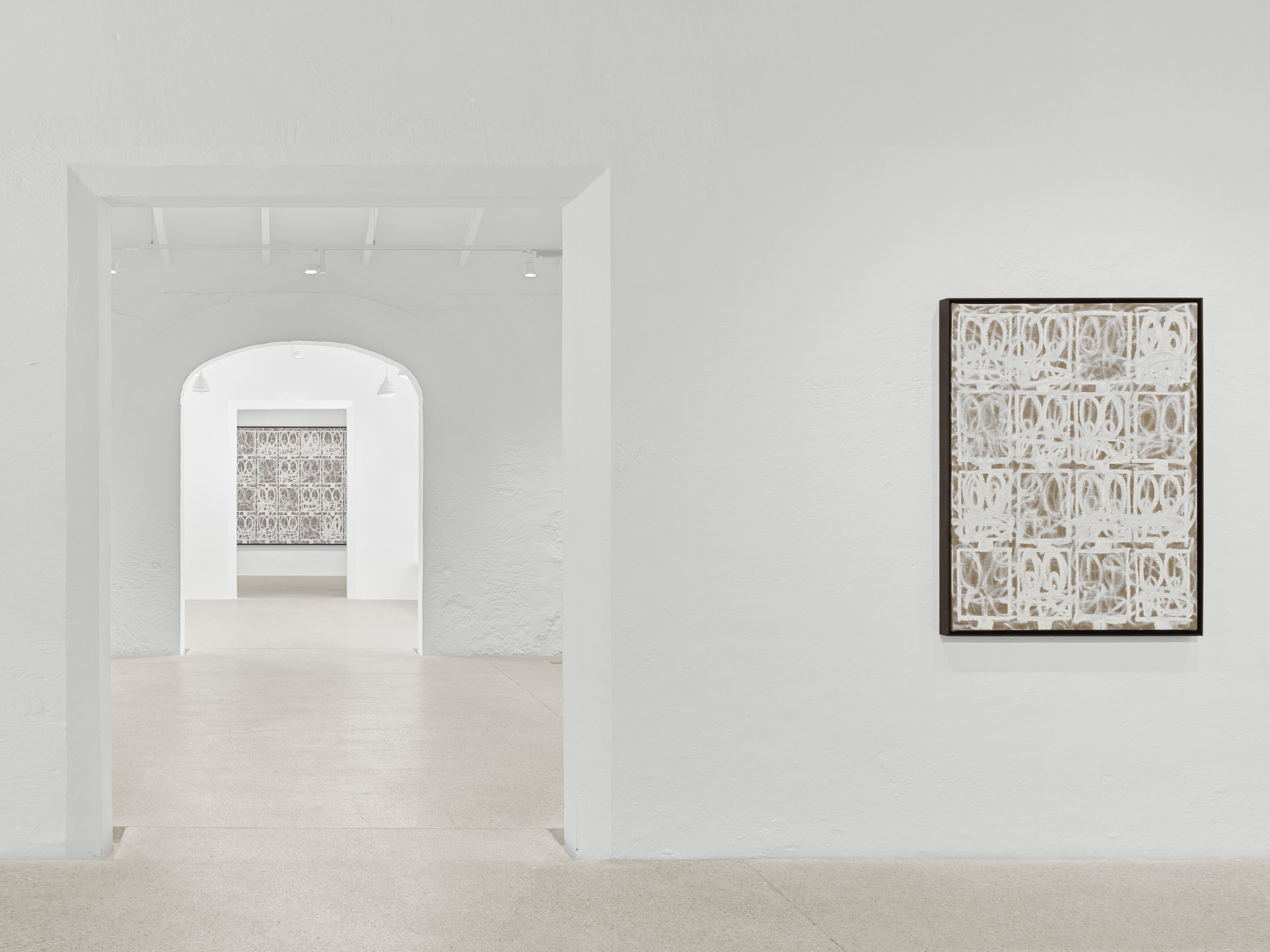
Installation view, ‘Rashid Johnson. Sodade’ at Hauser & Wirth Menorca, from 19 June to 13 November 2022
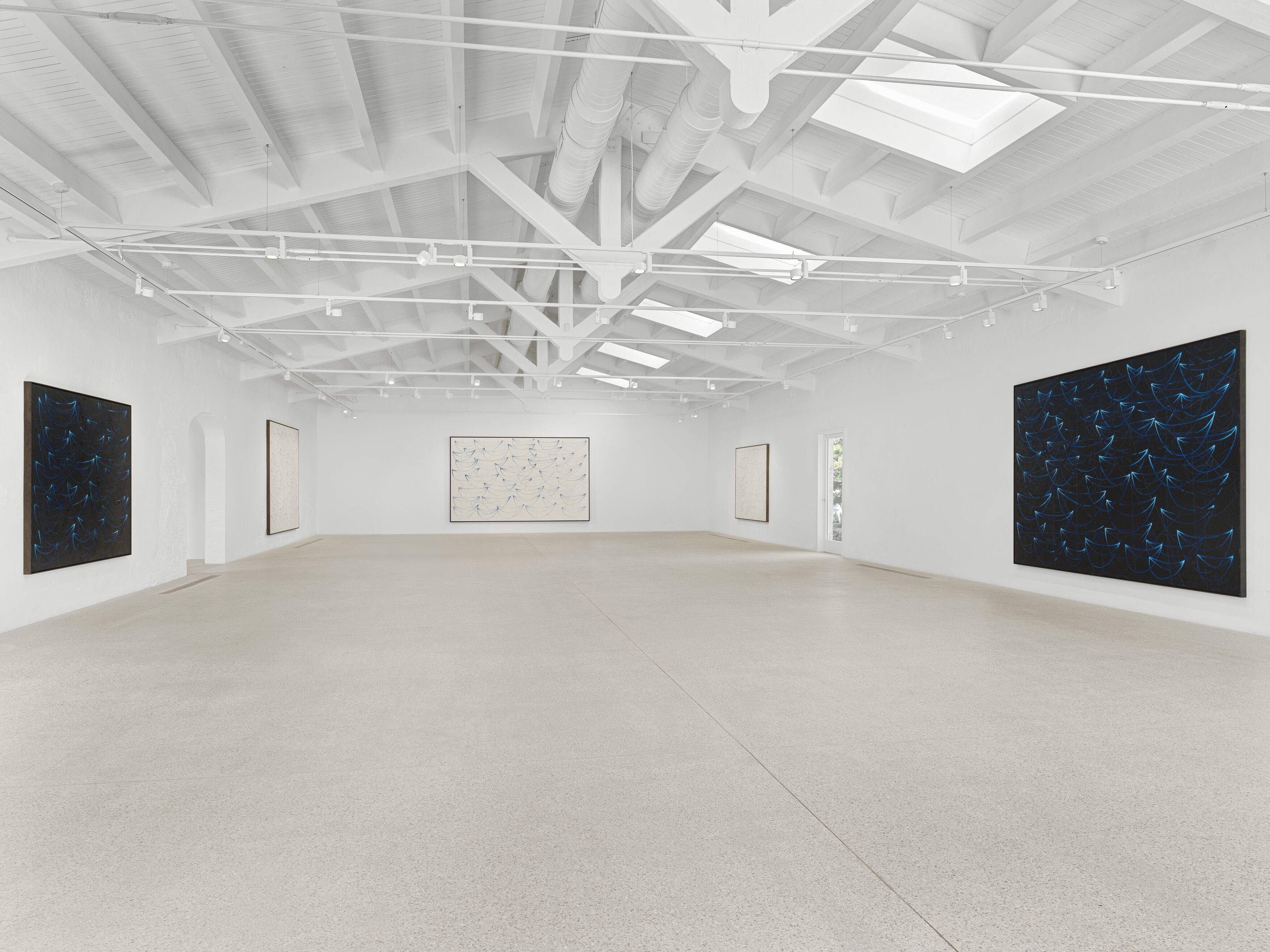
Installation view, ‘Rashid Johnson. Sodade’ at Hauser & Wirth Menorca, from 19 June to 13 November 2022
INFORMATION
This article originally appeared in the July 2022 issue of Wallpaper*. Wallpaper* is available in print, on the Wallpaper* app on Apple iOS, and to subscribers of Apple News +. Subscribe to Wallpaper* today
Rashid Johnson’s show ‘Sodade’ runs until 13 November 2022 at Hauser & Wirth Menorca, hauserwirth.com
Osman Can Yerebakan is a New York-based art and culture writer. Besides Wallpaper*, his writing has appeared in the Financial Times, GQ UK, The Guardian, Artforum, BOMB, Airmail and numerous other publications. He is in the curatorial committee of the upcoming edition of Future Fair. He was the art and style editor of Forbes 30 Under 30, 2024.
-
 Put these emerging artists on your radar
Put these emerging artists on your radarThis crop of six new talents is poised to shake up the art world. Get to know them now
By Tianna Williams
-
 Dining at Pyrá feels like a Mediterranean kiss on both cheeks
Dining at Pyrá feels like a Mediterranean kiss on both cheeksDesigned by House of Dré, this Lonsdale Road addition dishes up an enticing fusion of Greek and Spanish cooking
By Sofia de la Cruz
-
 Creased, crumpled: S/S 2025 menswear is about clothes that have ‘lived a life’
Creased, crumpled: S/S 2025 menswear is about clothes that have ‘lived a life’The S/S 2025 menswear collections see designers embrace the creased and the crumpled, conjuring a mood of laidback languor that ran through the season – captured here by photographer Steve Harnacke and stylist Nicola Neri for Wallpaper*
By Jack Moss
-
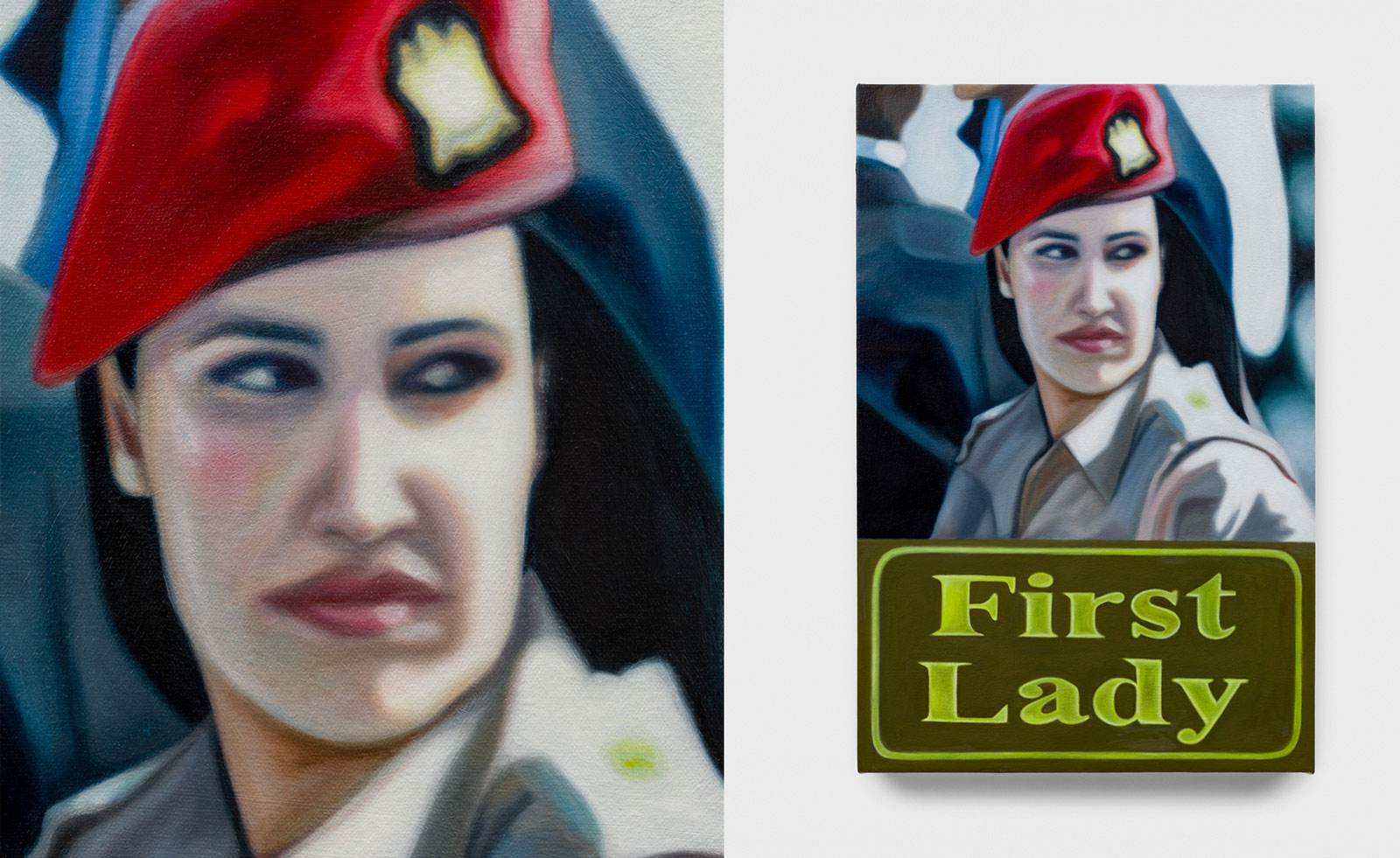 Tasneem Sarkez's heady mix of kitsch, Arabic and Americana hits London
Tasneem Sarkez's heady mix of kitsch, Arabic and Americana hits LondonArtist Tasneem Sarkez draws on an eclectic range of references for her debut solo show, 'White-Knuckle' at Rose Easton
By Zoe Whitfield
-
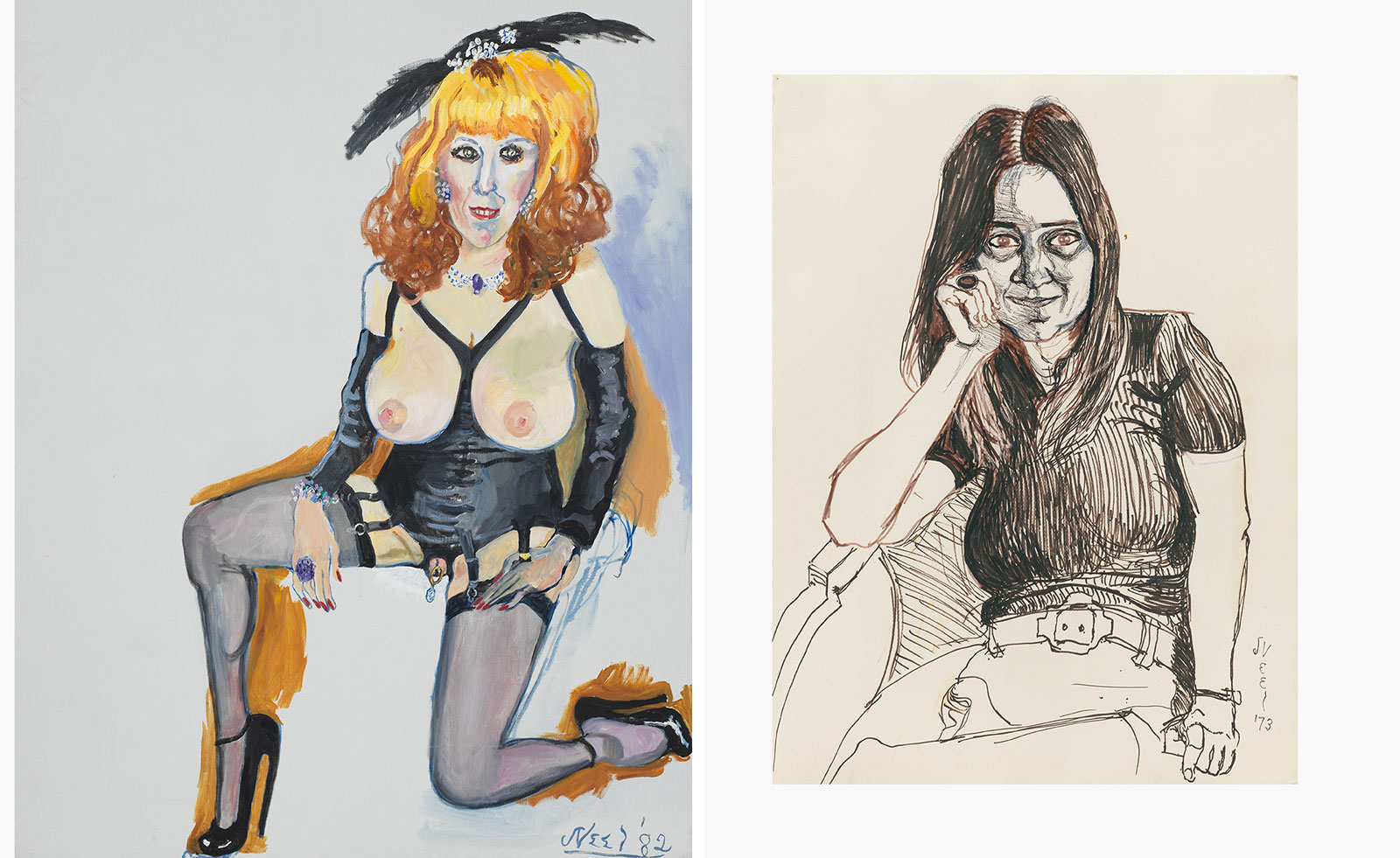 Alice Neel’s portraits celebrating the queer world are exhibited in London
Alice Neel’s portraits celebrating the queer world are exhibited in London‘At Home: Alice Neel in the Queer World’, curated by Hilton Als, opens at Victoria Miro, London
By Hannah Silver
-
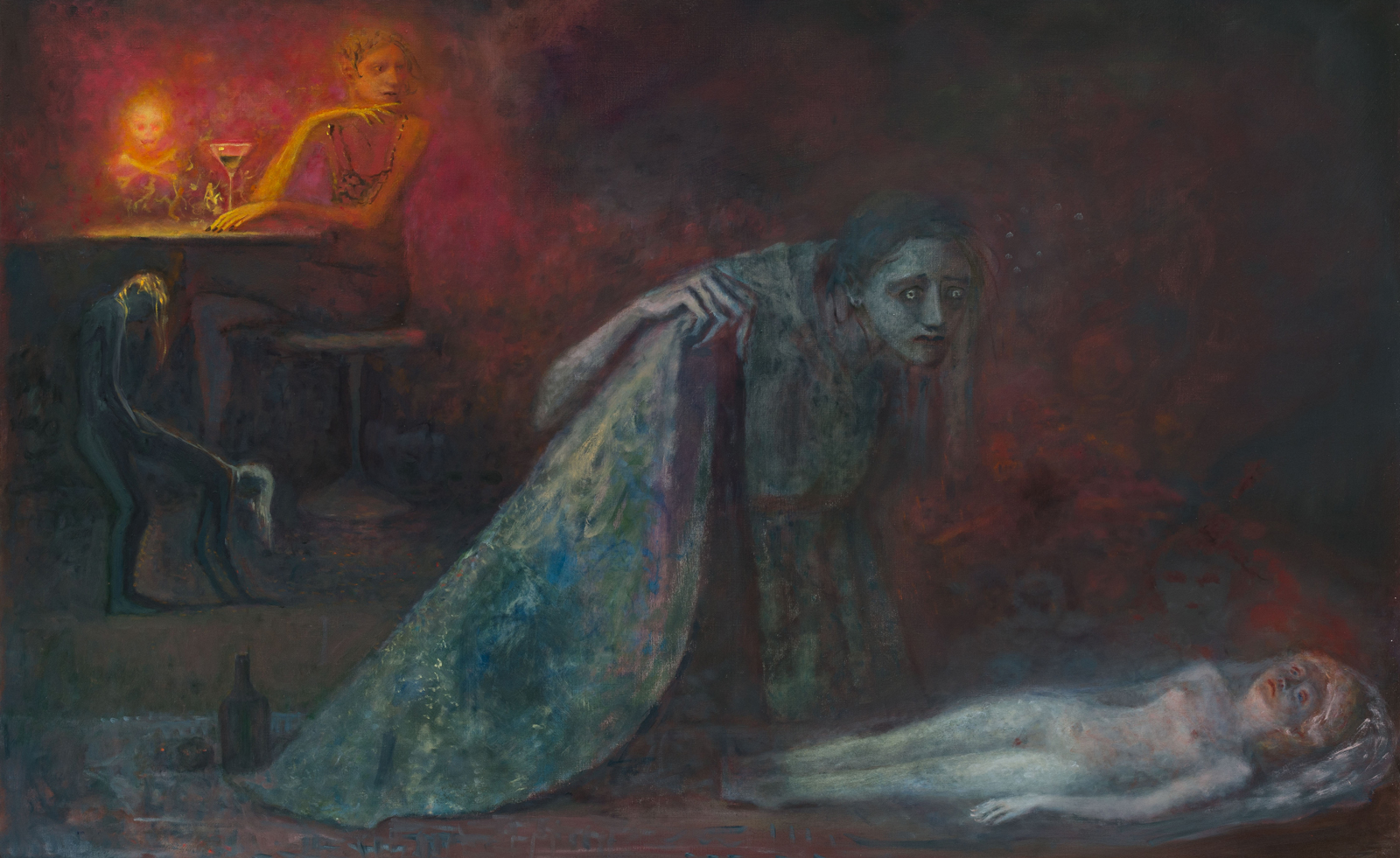 ‘You have to face death to feel alive’: Dark fairytales come to life in London exhibition
‘You have to face death to feel alive’: Dark fairytales come to life in London exhibitionDaniel Malarkey, the curator of ‘Last Night I Dreamt of Manderley’ at London’s Alison Jacques gallery, celebrates the fantastical
By Phin Jennings
-
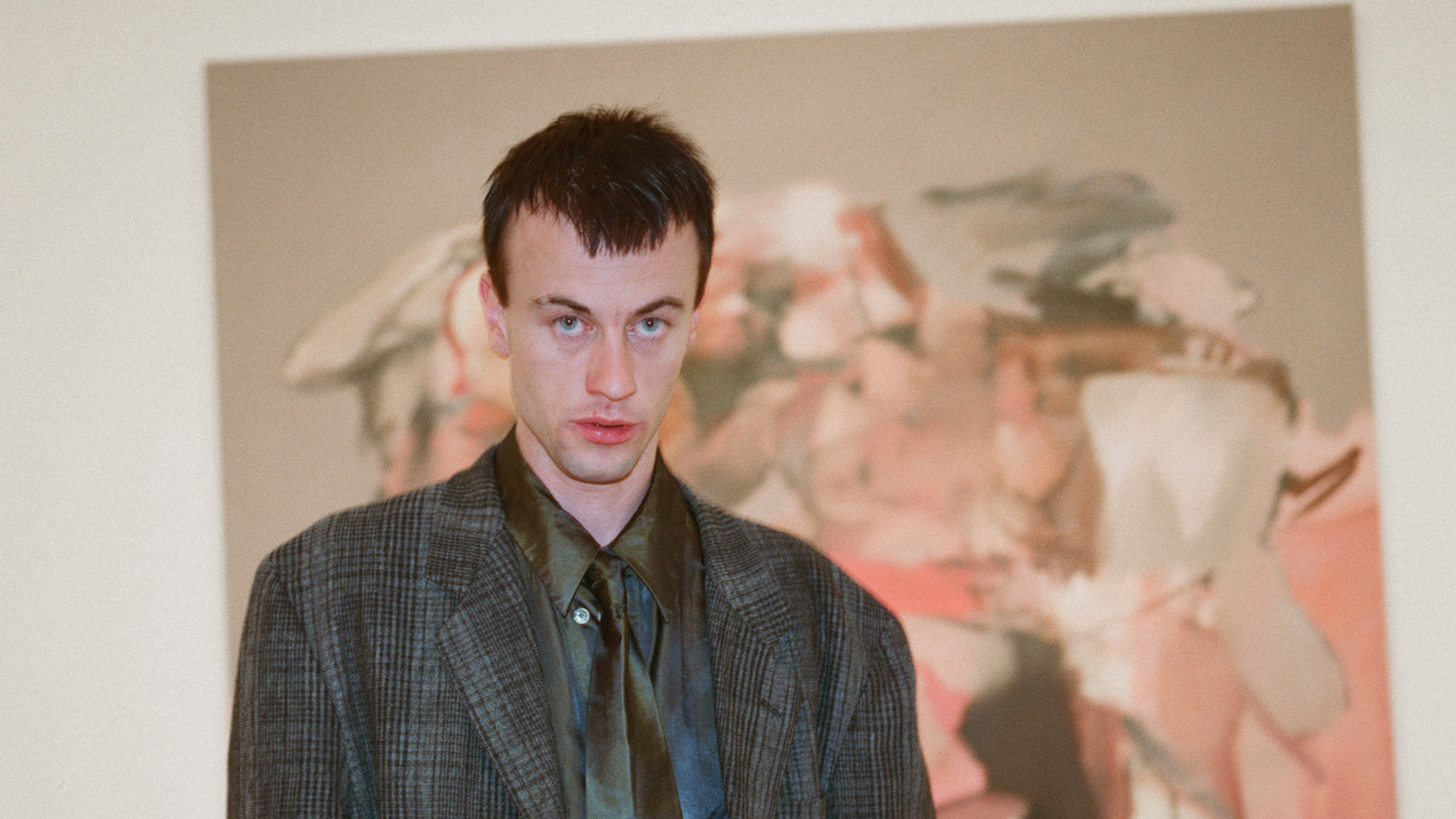 Inside the distorted world of artist George Rouy
Inside the distorted world of artist George RouyFrequently drawing comparisons with Francis Bacon, painter George Rouy is gaining peer points for his use of classic techniques to distort the human form
By Hannah Silver
-
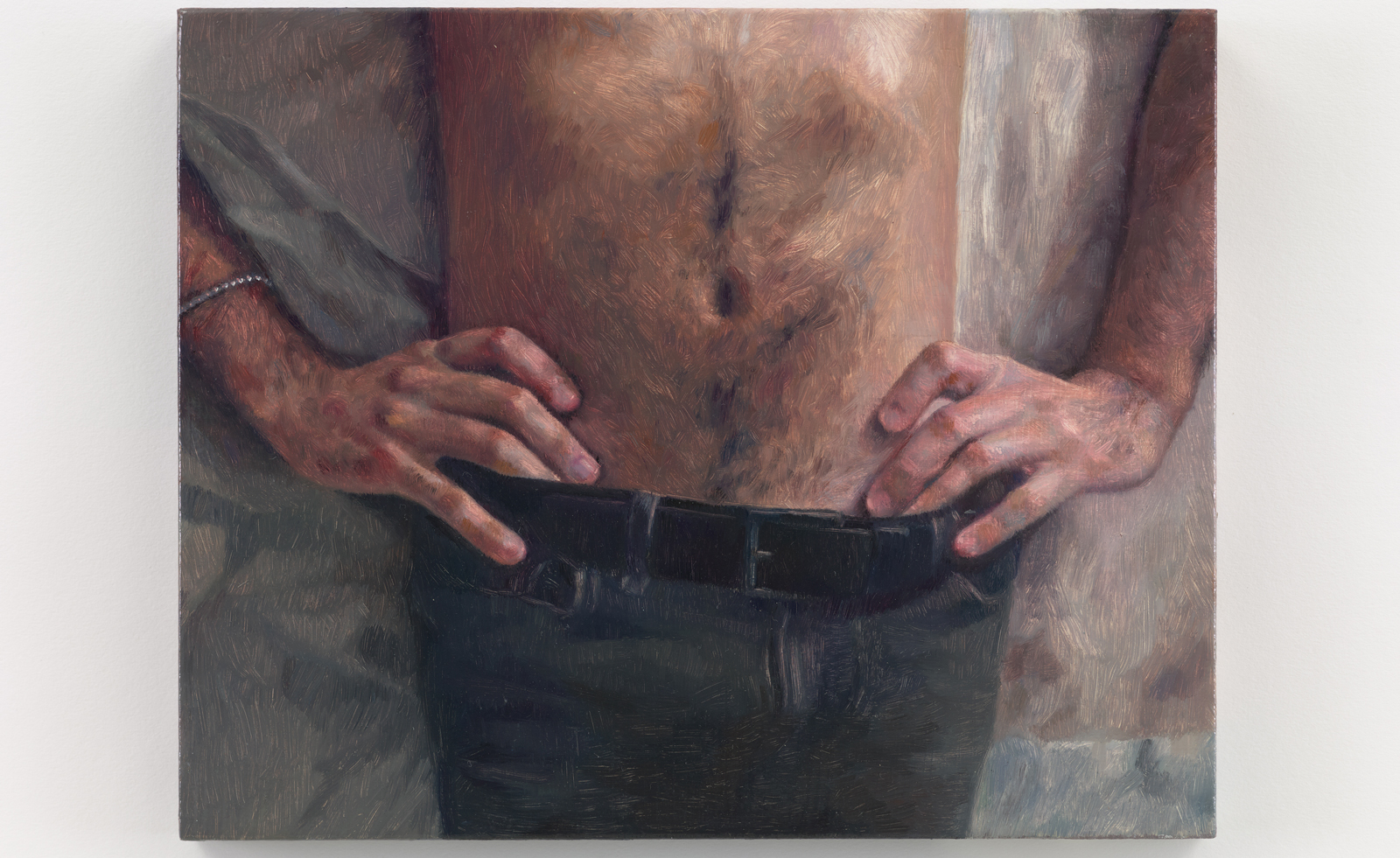 Love, melancholy and domesticity: Anna Calleja is a painter to watch
Love, melancholy and domesticity: Anna Calleja is a painter to watchAnna Calleja explores everyday themes in her exhibition, ‘One Fine Day in the Middle of the Night’, at Sim Smith, London
By Emily Steer
-
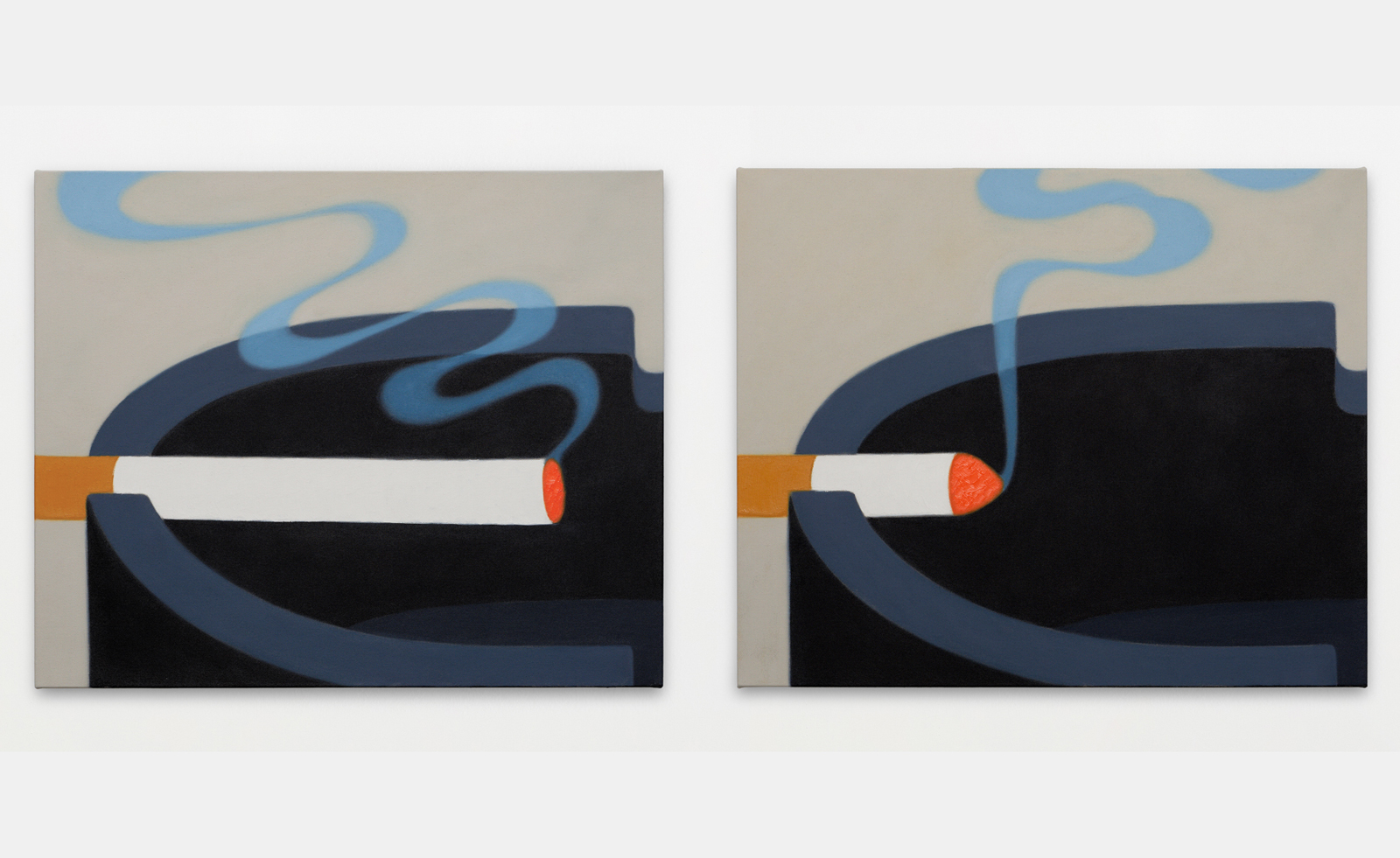 Henni Alftan’s paintings frame everyday moments in cinematic renditions
Henni Alftan’s paintings frame everyday moments in cinematic renditionsConcurrent exhibitions in New York and Shanghai celebrate the mesmerising mystery in Henni Alftan’s paintings
By Osman Can Yerebakan
-
 Inside Jack Whitten’s contribution to American contemporary art
Inside Jack Whitten’s contribution to American contemporary artAs Jack Whitten exhibition ‘Speedchaser’ opens at Hauser & Wirth, London, and before a major retrospective at MoMA opens next year, we explore the American artist's impact
By Finn Blythe
-
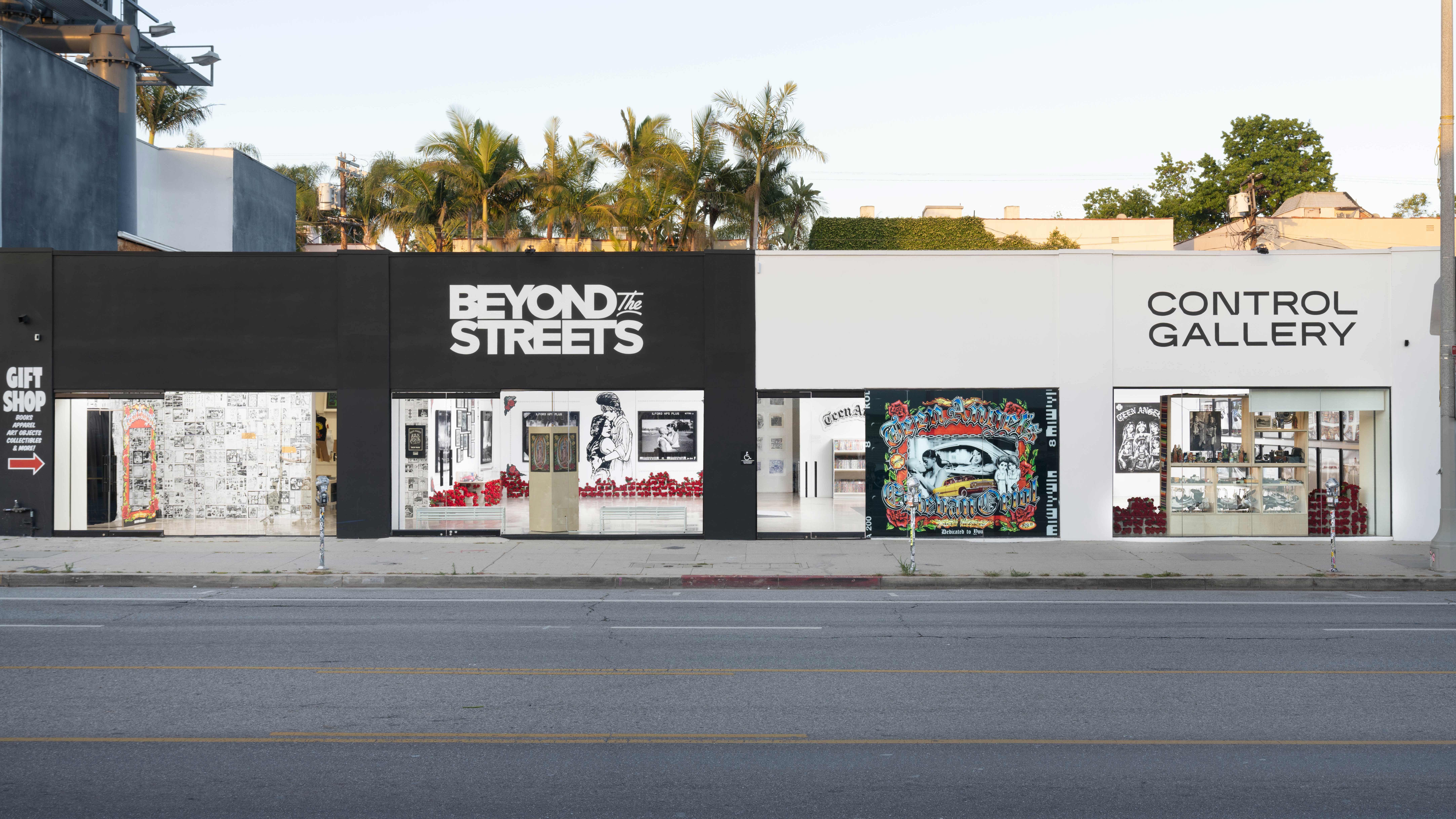 The lesser-known Los Angeles galleries contributing to a vibrant art scene
The lesser-known Los Angeles galleries contributing to a vibrant art sceneOutside of LACMA, MOCA and The Broad, these independent LA galleries are major players in the art world
By Kevin EG Perry